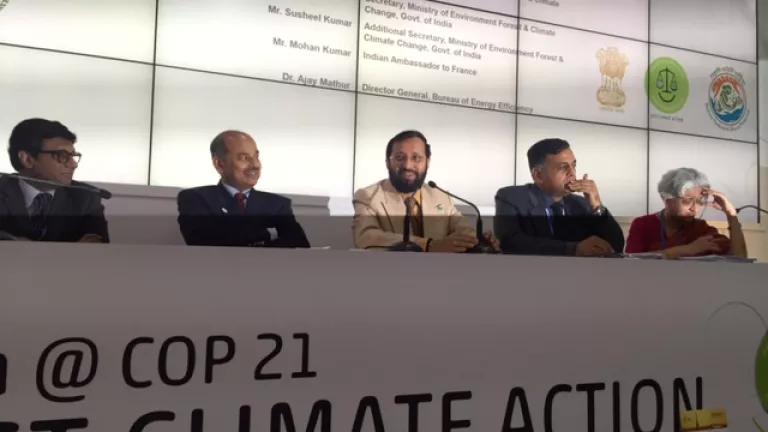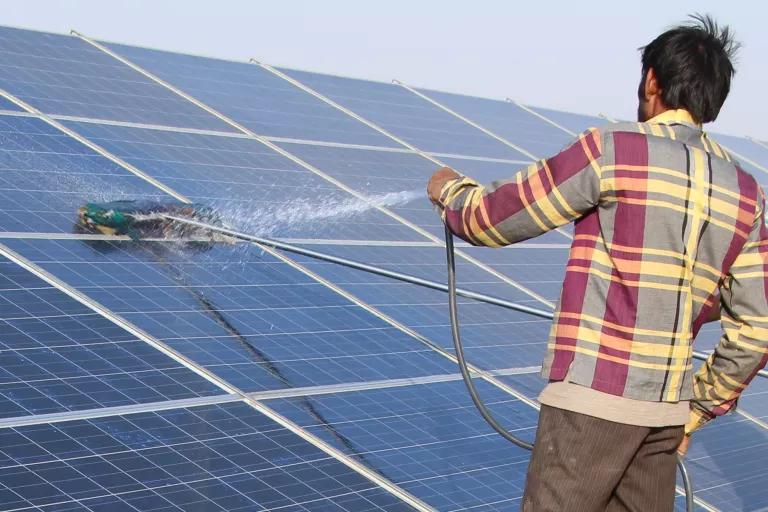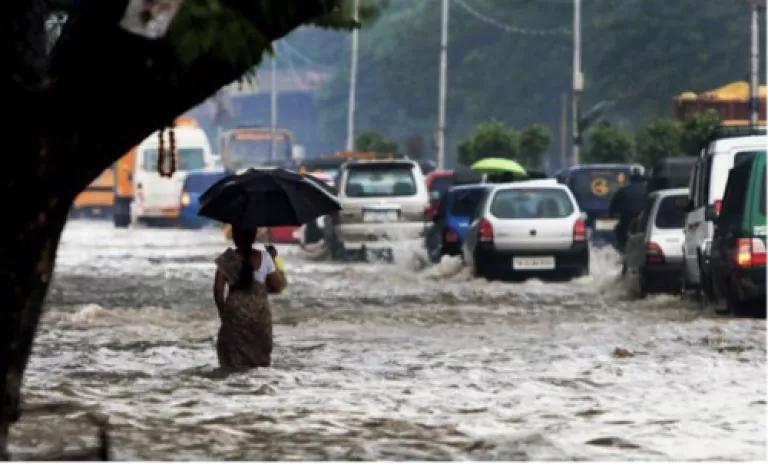
Co-authored by Meredith Connolly and Anjali Jaiswal
"India will have an agreement tomorrow that will be good for the Indian people."
~ Prakash Javadekar, Minister of State for Environment, Forests and Climate Change, at the COP21 India Pavilion valedictory session, December 11, 2015
In the final days of the climate summit, it is clearer that countries came to Paris expecting to reach a strong international agreement. In a sign of cautious optimism, countries are showing openness and flexibility as they hammer out the remaining critical details in Paris. As the third largest emitter, after China and the United States, India's role in the climate agreement is crucial. While the international context is an important frame, domestic priorities - including producing electricity for millions who still lack it and reducing deadly climate impacts - are driving India to take action on climate change both here at Paris and when everyone returns home.
The Government of India has focused on making a climate pledge (called an INDC in UN climate speak) that is both "ambitious and achievable." The emissions intensity reduction of 33 to 35% based on 2005 levels by 2030 is a strong pathway to control emissions while enabling economic development and alleviating poverty. India's domestic climate plan prioritizes clean energy, aiming to install an astonishing 175 gigawatts (GW) of renewable energy by 2022 (the equivalent of 350 coal-fired power plants), and run the enormous country with a 40% non-fossil fuel energy mix by 2030.
The elements of India's climate plan, submitted for the Paris agreement (available here), are cemented into India's domestic policy. India spent several months developing its INDCs after a process of robust debate in New Delhi and throughout the country. India's INDCs are built into the eight missions of India's National Action Plan on Climate Change. In addition to the emissions intensity reduction and clean energy targets, India will create an additional carbon sink of 2.5 to 3 billion tons of CO2 equivalent by 2030 through increasing forest and tree cover as well as enhance investments in climate adaptation strategies to protect its most vulnerable citizens.

"We are focusing on renewable energy, not for laurels, but to light the homes of the poor and bring a change in their lives. The fruits of development will not reach the common man until energy reaches the last household of the country. This is our inspiration." ~ Prime Minister Narendra Modi, COP21 Paris negotiations
India is motivated to take strong climate action because of the tremendous needs at home. Here are five key reasons India is motivated to take action on climate change:
- Increasing Energy Access. Providing "affordable 24x7 power" to all Indian households by 2017 is a national priority for India. With 300 million people - nearly the size of the entire U.S. pollution - without access to modern electricity, expanding energy access is an urgent goal of the government. Reaching those populations and decreasing the energy deficit through clean energy, including solar, wind and energy efficiency, are major opportunities for India. On the first day of the Paris negotiations, India announced a new International Solar Alliance (ISA) - inviting over 120 solar-rich countries to propel clean energy and protect the climate. The ISA is part of India's effort to advance a low-carbon economy, including domestic targets to install 100 GW of solar energy by 2022.
- Protecting Vulnerable Communities. Alarming air pollution levels, devastating flooding in Chennai, and deadly heat waves have plagued communities across India in 2015, making clear that the country is already being hit hard by climate change. The rising awareness of the debilitating smog clouding India's cities has motivated Delhi's leaders to take greater action to monitor and mitigate its causes. Finding less carbon intensive ways forward, including shifting to clean energy sources that pollute less than fossil fuels, is key to improving India's air, environment and water, as well as combating the global problem of climate change. At the same time, robust resilience plans and early warning systems such as the Heat Action Plan piloted in 2013 in the city of Ahmedabad, Gujarat, can help communities prepare for extreme weather events and climate related disasters.
- Growing Livable Cities. With skyrocketing urbanization, constructing more livable Indian cities is critical. Nearly 260 million people are projected to move to cities by 2030 and most infrastructure--roads, buildings, and transportation systems--that accompany urbanization have yet to be built. The Government of India launched a "100 Smart Cities" program in June 2015 to apply IT-based solutions for sustainable urban development.
- Jobs, Jobs, Jobs. With a booming population and young labor force looking for jobs, growing solar and wind power markets also represents a much-needed solution. If India achieves its solar target of 100 GW by 2022, as many as 1 million jobs could be created. A new "Skill India" Mission aims to train 400 million people by 2020, a promising program to provide the trained manpower needed to install India's legion of clean energy projects underway.
- Bolstering Energy Security. In 2015, India imported 80 percent of its crude oil requirement and significant amounts in fossil fuels. With India facing rising fuel prices, threats to energy security, and an ever-increasing demand for energy, the target of 175 GW of homegrown renewable energy is essential to ameliorate India's energy challenges and fortify energy security.
"Developing countries want Paris to succeed as they are at the receiving end of the climate change happening around the world."
~ Environment Minister Prakash Javadekar

As India's people seek relief from flooded cities, choking air pollution and unbearable heat waves, its representatives in Paris are working hard to secure a climate agreement that curbs climate change and puts the world on a safer trajectory. As the Indian government has made clear, they are dedicated to acting on climate change and becoming a clean energy leader because it is in India's best interest to thrive.



